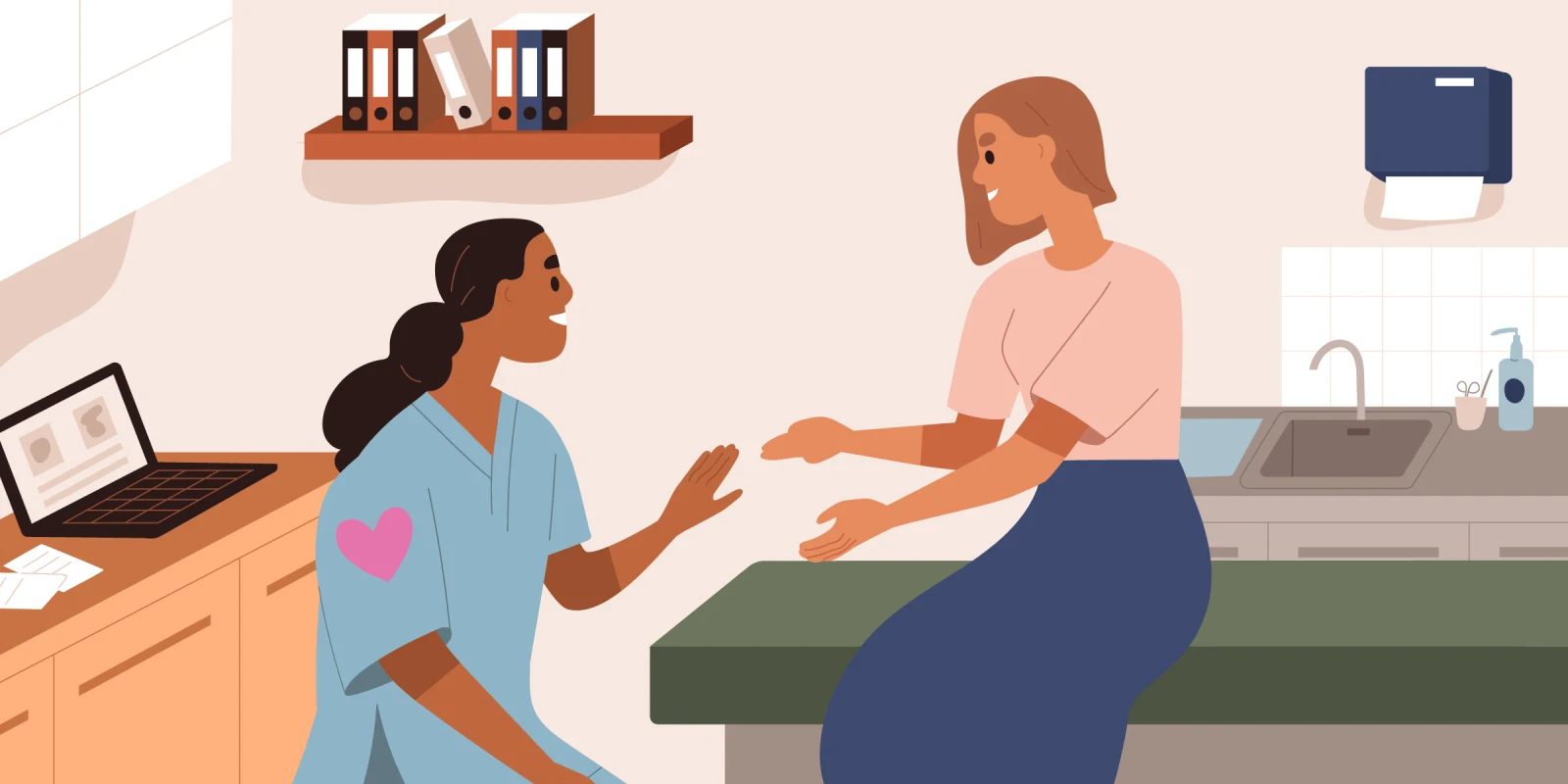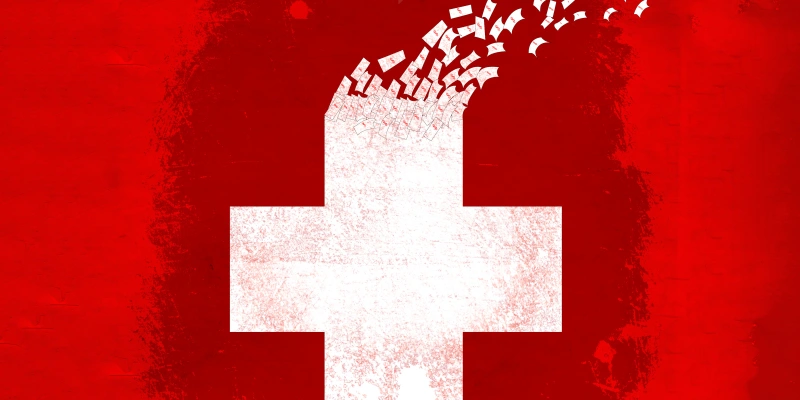The week before my emergency medical technician training course was scheduled to start, I gave my 6-month-old son formula for the first time. I started him on solid baby foods the month before, but otherwise he’d been exclusively breastfed. Anticipating my more frequent absences, I wanted to introduce formula as an option, in case I couldn’t keep up with pumping. I prepared 2 ounces as a first try, interested to see if he would take it. Within a minute or two of drinking the formula, my son projectile-vomited all over the living room. Then his face broke out in hives.
As an infant, my older daughter had also had a dairy allergy, so my son’s reaction didn’t take me by complete surprise. But when his lips started swelling, I got concerned. I called our pediatrician’s nurse line and described my son’s symptoms. She asked me if he was having difficulty breathing — I didn’t think so — and told me to give him an antihistamine if I had it on hand. Then she told me to hang up and call 911. That’s when I freaked out.
It all turned out fine; I did have an antihistamine on hand and by the time the EMTs arrived, the hives and swollen lips were already receding. They didn’t need to give him epinephrine, but they transported us to the hospital as a precaution. On the way, I mentioned that I would be starting my training course the following week. When we parted ways in the ED, they told me they’d see me soon.
We stayed in the ED for a few hours of observation, then were discharged with an EpiPen. My son quickly grew out of his hypersensitivity and became an avid milk drinker. I completed my training course, passed my licensing exam, and became a full-fledged EMT, riding on the ambulance 30–40 hours a month while I worked my way through my pre-medical post-bacc program and prepared to apply to medical school.
Almost two years exactly after the projectile vomiting incident, I was upstairs getting ready one morning when I heard a piercing scream. It was not the kind of scream that you wait out to see if it will die down — it was the kind of scream for which you drop everything and run. I raced downstairs to find my son — that same projectile-vomiter, now 2-and-a-half years old — clutching his hand and wailing. The EpiPen we had never used was lying next to him on the ground, discharged. Somehow, my toddler had fished the EpiPen out of the back of a drawer, taken it out of its plastic case, removed the safety lock, and injected it into his palm.
This time, I skipped right over concern and went straight to panic. If I had stopped to think — drawing on reason, logic, and two years of knowledge and experience as an EMT — I would have realized that this was not an emergency. It was unclear whether the entire epinephrine dose had actually been injected, and regardless, I knew that the most likely outcome of accidental epinephrine injection is transient local vasoconstriction, which is almost never limb-threatening. But I didn’t stop to think. Instead, I grabbed my phone and dialed 911 while holding my screaming child.
My EMT colleagues were understandably bewildered when they showed up at my house. By then, my son had calmed down, his hand was fine, and no treatment was needed. I was embarrassed. If I, someone with medical knowledge and specific training in epinephrine auto-injectors, couldn’t summon the presence of mind to objectively evaluate my own child’s accidental injection, what did that say about me as a parent? And what did it say about me as an aspiring physician?
I’m halfway through medical school now (not to mention several more years into parenting), and I’d like to think that now I could handle another EpiPen accident with a little more poise. But emotional closeness in medicine is tricky. So tricky, in fact, that the American Medical Association has issued a formal opinion as a part of their Code of Medical Ethics that recommends against providing medical care to one’s own family members because “the physician’s personal feelings may unduly influence his or her professional medical judgment.” Of course, when caring for any patient, we are supposed to have feelings — the tenet of compassion is written into the AMA’s first principle of medical ethics — but the key, apparently, is to keep those feelings out of clinical reasoning. There is a line, a fine one, between the personal and the professional.
Rather than an arbitrary partition, this dichotomy might actually be a biological necessity. In his article “Death and Sandwiches,” Dr. Dhruv Khullar describes how the empathetic and analytical parts of our brains work in almost direct opposition to each other. Instead of trying to merge thinking and caring, Dr. Khullar suggests physicians might do better to focus on “toggling” between the two. When managing patient care, sometimes we need to come with our thinking hats — and sometimes we need to come with our feeling hats. The art is in knowing which one to put on when. We absolutely need both hats, but it’s really really hard to wear them at the same time.
I’ve thought a lot about the two hats this year as a clerkship student on my clinical rotations. I’ve been lucky to encounter several patients with whom I’ve built a special bond, and the emotional connection is electrifying. I followed one patient throughout my medicine rotation, through a cancer diagnosis and tumor resection. I continued to visit her in the hospital even after surgery had taken over primary management of her case, just to check in and see how she was doing. Another patient reminded me so much of my grandmother; when she asked me if I could be her regular doctor, my heart swelled. I’ve wondered: if I were actually in charge of these patients’ care — these patients for whom I feel something extra, something fiercer and more complicated — would the medical care they received from me be the same as the care they received from others? Or would it be better? Or, possibly, worse?
As a person who generally moves through the world with her heart on her sleeve, I’ve realized that while emotion has its place, so does objective analysis. And while I love the high of human connection in medicine, I’m also excited to hone the skills that come with my thinking hat, so that I can provide excellent and equitable medical care to all my patients, curious toddlers notwithstanding.
Do you have trouble toggling back-and-forth between your brain and your heart? Share your tips for choosing the appropriate “hat” in the comments!
Fiona Miller is a second-year medical student at the University of California, San Francisco and the mother of three feisty kids. She is passionate about racial health equity, reproductive justice, and harnessing the power of human stories towards healing. Fiona is a 2020–2021 Doximity Op-Med Fellow.
Image by GoodStudio / Shutterstock







